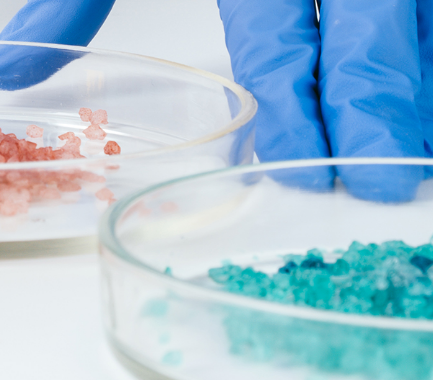Your contact
PENPET-Team - Hamburg

Jan Prager
Sales
Tel. +49 (0) 40 - 675 7 99 10
sales@penpet.de
Get in touch with us.
2-Ethylhexanoic Acid
2-Ethylhexanoic acid is a substance from the group of carboxylic acids. The compound can be manufactured in different ways. Production by oxidation of 2-ethylhexanal or 2-ethyl-1-hexanol and production in a multi-stage process of hydroformulation, condensation, hydrogenation and oxidation of propylene via the intermediates butanal, 2-ethylhexenal and 2-ethylhexanal are common.
The compound is an important starting material for the production of metal salts, heavy metal soaps for paints and varnishes, thickeners for petrol and mineral oils, as well as stabilizers, plasticizers, emulsifiers and corrosion inhibitors. 2-Ethylhexanoic acid is also used to modify acrylic resins.
You can easily and reliably order the required amount of 2-ethylhexanoic acid from PENPET. We look forward to receiving your inquiry for an individual offer. Delivered in all conventional packaging, such as tank containers, IBCs or in barrels.
CAS no. 149-57-5
EINECS no. 205-743-6
Molecular formula: C8H16O2
Synonyms: α-ethylhexanoic acid, 2-ethylcaproic acid, (RS)-2-ethylcaproic acid, 2-EHA
Areas of application: Manufacture of metal salts, heavy metal soaps, thickeners, plasticizers, stabilizers, emulsifiers and corrosion inhibitors
More Information
As a carboxylic acid, 2-ethylhexanoic acid has a carboxy group that gives it its reactive profile. The carboxylic acid group enables, among other things, a conversion of the substance by dehydration or by esterification together with an alcohol. The compound has eight carbon atoms, six of which are arranged to form a regular molecule of hexanoic acid with a terminal functional group.
An ethyl group is also attached to the carbon atom adjacent to the carboxy group. The possible spatial arrangement of the bonds on this atom results in two stereoisomers of 2-ethylhexanoic acid. These are referred to as (S)-enantiomer and as (R)-enantiomer. Technically used and commercially traded 2-ethylhexanoic acid consists of a mixture of these two variants.
2-Ethylhexanoic acid is a slightly volatile liquid. The compound is colorless to slightly yellowish and almost odorless. In aqueous solution, 2-ethylhexanoic acid is acidic. The compound is only sparingly soluble in water, but readily soluble in diethyl ether and carbon tetrachloride and other polar solvents.
Under normal conditions, 2-ethylhexanoic acid is chemically stable. The compound is flammable, but very difficult to ignite. However, the vapors of the substance combine with the ambient air to form explosive mixtures. Because they are denser, the vapors are heavier than air. They gather on the ground and can spread unnoticed. Remote ignition of the vapor-air mixture is therefore possible. 2-Ethylhexanoic acid must therefore be kept away from all types of ignition sources and in particular from open flames, sparks and electrical discharges. The decomposition and combustion of 2-ethylhexanoic acid produces irritating and acrid gases. Harmful substances such as carbon monoxide are also released in the process.
2-Ethylhexanoic acid is toxic and can cause serious damage to health. The compound can cause serious damage to the tissues of the respiratory tract, mucous membranes, skin and eyes. Inhaling 2-ethylhexanoic acid can cause spasms, inflammation of the throat and bronchi, and pulmonary edema. A fatal course of poisoning is possible. Milder signs of exposure include headaches, nausea, and difficulty breathing. 2-Ethylhexanoic acid is considered toxic to reproduction and can cause prenatal developmental damage
